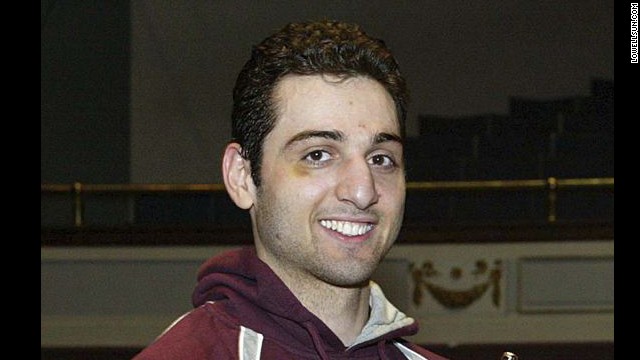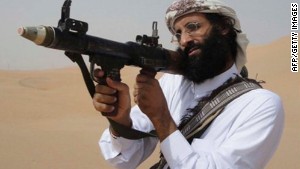Apr 12, 2014
The man who inspired the Boston bombings, CNN.com
The man who inspired the Boston bombings
By Peter Bergen and David Sterman
updated 10:16 AM EDT, Fri April 11, 2014
 Police say the dead suspect,Tamerlan Tsarnaev, is the man the FBI identified as Suspect 1. He was killed during the shootout with police in Watertown, Massachusetts, early April 19. He is pictured here at the 2010 New England Golden Gloves.
Police say the dead suspect,Tamerlan Tsarnaev, is the man the FBI identified as Suspect 1. He was killed during the shootout with police in Watertown, Massachusetts, early April 19. He is pictured here at the 2010 New England Golden Gloves.
STORY HIGHLIGHTS
- Peter Bergen says a terrorist killed in a U.S. drone strike continues to influence jihadists
- He says it was easier for U.S. to kill Anwar al-Awlaki than to eliminate support for his ideas
- Suspect in Boston bombings downloaded al-Awlaki's articles and his magazine, Bergen says
- Bergen: Many other charges have been brought against followers of al-Awlaki

Peter Bergen
By his own account, it was during this period that al-Awlaki began to develop a hatred for the United States, feelings he was quite adept at keeping to himself. This hatred was sparked by the first Gulf War, which followed Saddam Hussein's invasion of Kuwait in August 1990. Six months later a massive American army based in Saudi Arabia expelled Hussein's troops from Kuwait. After Hussein's armies were ignominiously pushed out of Kuwait, a large-scale U.S. military presence in Saudi Arabia continued for many years. For politicized, fundamentalist Muslims such as al-Awlaki, the presence of thousands of "infidel" American troops on the holy land of Saudi Arabia was a deep irritant. During his years living in San Diego and later in Virginia, al-Awlakimet with three of the 9/11 hijackers in the months before the attacks. Almost a decade later he also gave the order to Umar Farouk AbdulMutallab, the "underwear bomber" to take down an American plane with a bomb. AbdulMutallab ignited his bomb on Northwest Flight 253 on Christmas Day 2009 as it flew over the suburbs of Detroit, but luckily the device failed to detonate properly.

This image released by SITE Intelligence Group, shows Anwar al-Awlaki, who was killed in a CIA drone strike on September 30, 2011.
As a result of the operational role al-Awlaki was playing in al Qaeda, President Barack Obama gave the authorization for his death, and on the morning of September 30, 2011, CIA drones locked on to the vehicle he was traveling in Yemen and fired missiles that killed the cleric. Obama called the death of al-Awlaki a "major blow" to al-Qaeda in Yemen, which had now lost its "leader of external operations." But it turns out that killing the militant cleric was easier than killing his ideas that linger on in the virtual world. Dzhokhar Tsarnaev, the younger brother who survived a shootout with police shortly after the Boston Marathon bombings, had downloaded articles written by al-Awlaki, according to the indictmentagainst him. Tsarnaev also downloaded the first issue of Inspire magazine, al Qaeda in the Arabian Peninsula's English-language webzine, which al-Awlaki helped to produce. Law enforcement officials linked the pipe bombs allegedly used by the Tsarnaev brothers in the Boston Marathon bombings to step-by-step instructions for how to build similar pipe bombs that were printed in that first issue of Inspire.The Tsarnaev brothers may not be the only individuals in the United States to have been influenced by al-Awlaki. According to a count by the New America Foundation, since 9/11, 52 American citizens or U.S. residents indicted in a jihadist terrorist-related crime or that have been killed have cited al-Awlaki as an influence, possessed his propaganda or were in communication or met with him. Al-Awlaki was in e-mail communication, for instance, withMaj. Nidal Hasan, who killed 13 people in a shooting at Fort Hood, Texas, in 2009. Nor are the Tsarnaevs the only Americans likely to be influenced by Inspire magazine. According to a count by the New America Foundation, at least 16 individuals indicted since the magazine's first issue in 2010 have possessed or cited Inspire as an influence. Even today, court documents continue to cite al-Awlaki and Inspire as influencing factors in terrorism cases. Eighteen individuals indicted in the United States since al-Awlaki's death in 2011 have cited his influence or possessed his propaganda. In June, for instance, Justin Kaliebe, an 18-year-old New Yorker, pleaded guilty to attempting to travel to Yemen to join al Qaeda in the Arabian Peninsula. According to his plea agreement, Kaliebe told an undercover officer, "My standard is Sheik Anwar Al-Awlaki and Sheik Osama (bin Laden), both who bore witness to the truth." In November, the government indicted Basit Sheikh, a 29-year-old living in North Carolina, and charged him with attempting to provide material support to al-Nusra Front, a Syrian al Qaeda affiliate. The criminal complaint alleges that Sheikh posted a link on Facebook to a propaganda video narrated by al-Awlaki. In December, the government filed an indictment against Terry Loewen, a 58-year-old man from Wichita, Kansas, alleging he attempted to explode a car bomb at the Wichita Mid-Continent Airport. The criminal complaint alleges that Loewen told an undercover FBI informant, "Brothers like Osama bin Laden and Anwar al-Awlaki are a great inspiration to me," and, "I have read Anwar Al-Awlaki's 44 ways of Jihad, and like everything l've ever read of his, it's very informative." In March, Nicholas Teausant, a 20-year-old from Acampo, California, was arrested and charged with attempting to travel to fight in Syria. The criminal complaint alleges that Teausant's computer contained copies and excerpts of Inspire. It is not just the U.S. government that continues to view al-Awlaki as maintaining, even in death, his power to influence. Al Qaeda in the Arabian Peninsula continues to publish Inspire. The latest issue appeared in March featuring a purported interview with al-Awlaki made before his death in which he urged attacks on Western civilians. Al Qaeda and individuals motivated by the group's ideology continue to view al-Awlaki as an important voice so his writings, available on the Internet, will likely continue to crop up in terrorism cases for the foreseeable future. What can be done to counter this? An implausible approach is a "takedown" effort. Trying to eliminate al-Awlaki's writings on "holy war" on the Internet just won't work. Eliminate them on some sites, and they will simply pop up on others. Another more plausible approach would be for English-speaking Muslim clerics to contest publicly and widely al-Awlaki's arguments for justified holy wars against non-Muslims. So far such efforts remain limited both in number and reach.

FEATURED BOOK

